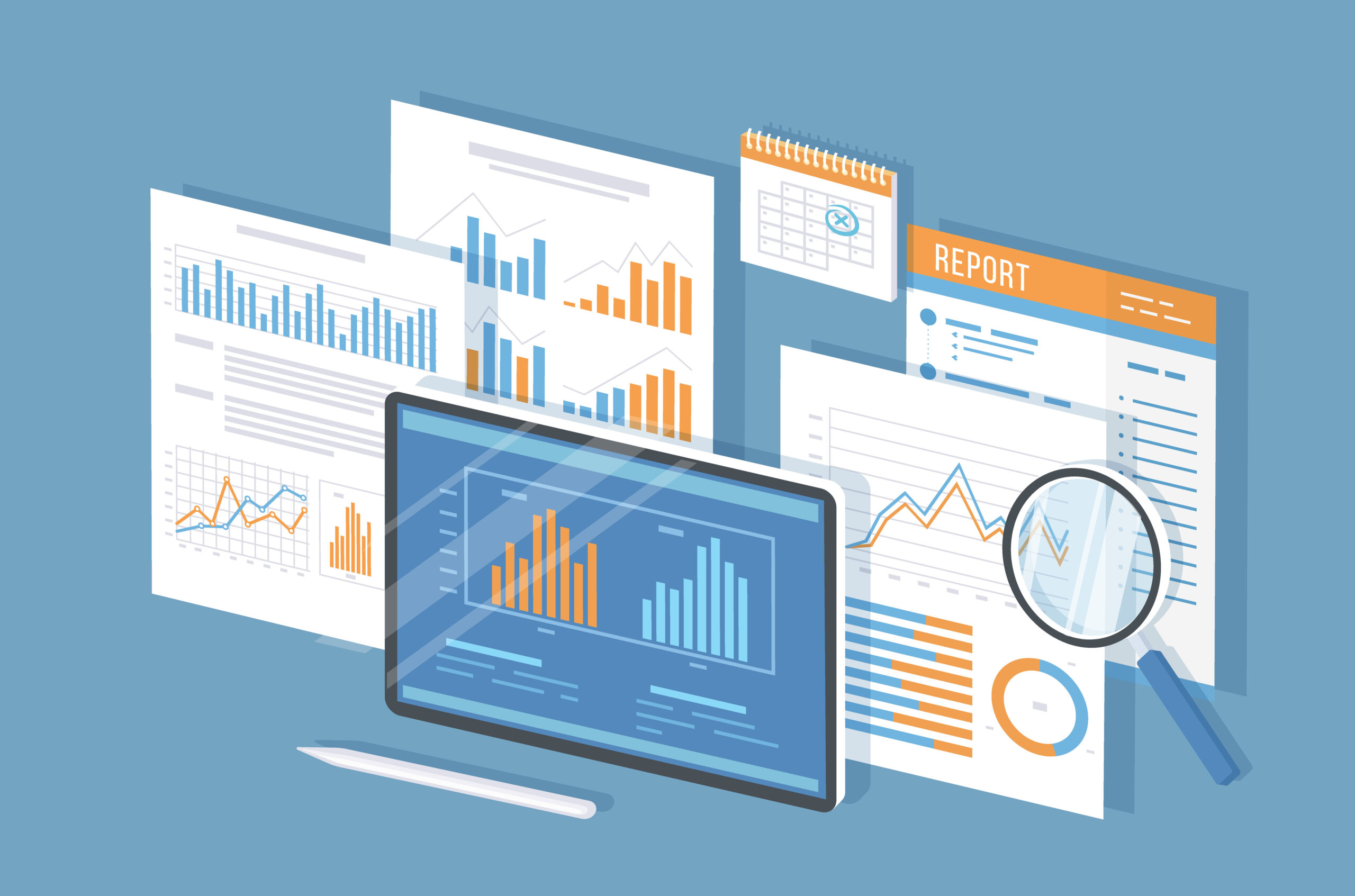2022’s Top Distribution Industry Trends in Pricing Strategies
December 22nd, 2021 (Updated 03/10/2023) | 11 min. read
By Iain Lewis
As a member of the Distribution Industry, you are intrinsically compelled to adopt the riskiest pricing strategies, let alone keep up with the latest industry trends. You are the middle link in the currently disturbed traditional supply chain between manufacturers and retailers. As a distributor right now, you need to account for customer demand, out of control inflation in addition to wildly fluctuating production costs. Other overheads like transportation and labor costs also steadily rose in 2020-21, while worldwide staff shortages in manufacturing were all challenging factors.
Furthermore, there are pricing strategies to consider in distribution that some other industries don’t need to.
For example, most automotive spare parts distributors out there will all have a similar painful story to this one. Recently, we heard from a potential client on their 2005 Audi TT replacement mufflers being sold at their accepted company-wide 1% price mark-up for the quarter. Great, a sale and at a 1% price increase. But the pricing teams later discovered that 2005 Audi TT’s are already considered classic vehicles and they could have asked much more for the muffler. Doubling down on their disappointment, it also came to light that shipping costs had increased 5% that month, however, the company only updated shipping costs once per quarter. Oops! By not tracking their product data and not using the latest shipping cost data, the spare parts distributor made a loss on a muffler they could have made a tidy profit on.
At Pricefx, we have been analyzing our clients’ distribution industry sales data and setting customer specific automated pricing processes for a decade now across a range of data points, assisting businesses to make real-time price changes and protect their margins.
In this article, we turn our attention to the distribution industry price planning process, pricing trends and tips for the year ahead and a range of innovative pricing strategies to increase profit for 2022.
The Distribution Industry Strategic Price Planning Process
As a distribution industry company, your pricing strategy should reflect your overall business model, your unique business objectives, what your company is good at and how you prefer to do business. While your distribution business is unique of course, it does share some general commonalities with the rest of the industry.
Data and its price setting power when used as scientifically as possible will be the pathway towards your distribution company’s price optimization points such as increased profit, eliminating margin leakage etc.
However, the point of difference for a distributor is that you have a product to sell and get out the door ASAP, but you will need to factor a ‘storage cost’ in. Having that stock ready to go at a moment’s notice makes you special. Conversely, if you cannot place stock on your shelves, it will place considerable pressure on your customer relationships and your business.
Consequently, the first point to note in your distribution business strategic process is that you’re adding value to your products for your customers by having those goods on your shelves ready to ship. Additionally, most of you are adding extras such as shipping, installation, or servicing. Those things cost money and they are points of value for your customers. Recognize it when pricing your products.

Secondly, depending on what the business model of your distribution company is, and the turnaround times you have on sales, instituting a regular price review should be an imperative part of your pricing strategy.
Whether it is once-a-week, once-a-month, or once-a-quarter, setting up a (SMART – specific/measurable/achievable/realistic/targeted) regular pricing review is essential to an effective pricing strategy.
Pricing is fluid. Reconsidering your pricing strategy at a similar rate to the changes that apply to your sector of the distribution industry will give you the best chance of success.
Furthermore, breaking up your price reviews by sectors or segments supplies more accurate pricing strategies.
Which Pricing Metrics Will be Important to Track in 2022?
Tracking pricing metrics that eventually become your master data to feed into pricing software will be the cornerstone of a successful strategy in 2022.
Every year, there are several evergreen pricing metrics and other things (that rarely if ever change) you need to track to optimize your prices in the distribution industry:
- Cost Increases – tracking cost increases in real time will be essential to planning how long it will take to recover the increases that may have potentially eroded your profit margins.
- Market Basket Analysis – This metric works by looking for combinations of items that occur together frequently in your transactions. To put it another way, it allows distributors to identify the relationships between the items that people buy.
- The overall costs of picking, packing, and boxing products
- Fixed Cost Delivery – For businesses such as Auto Parts, or Food Services (and therefore usually with your own vehicle fleet), it is essential to optimize how many deliveries can be made every time a truck leaves your warehouse. The fewer times that truck leaves the warehouse loaded up with products for delivery, the lower your costs.
- Inventory & Stock Control – Including the all-important factor of how long items remain on your shelves. This one is super-important as it is sometimes a hidden cost unconsidered by many distribution companies when setting prices for their products. The fact you have that product is valuable for your customer – you need to factor it into pricing!
- How much stock is on your shelves? – Directly compared to your competitors.
- What prices are your competitors offering for that remaining stock on their shelves?
- Extra Services that you offer – Track the cost of any extra services (delivery, installation, ongoing service, maintenance etc.) you offer as a distribution business to enhance the customer purchase and experience to add value, and therefore, to add to your price. It is important to remember that sometimes these items are negotiated away by your salespeople in order to secure the sale. If so, they will need to be tracked as costs.

The above pricing metrics are all meaningful, however, we recommend paying special attention to those metrics that have changed over recent times, and therefore are in the genesis of becoming trends.
Bear in mind, the key pricing metrics do not matter as much as understanding the value to your customers and it will be crucial for 2022. Weaponizing your data through analysis will help you define where that value point will sit for your customers.
7 Distribution Industry Pricing Tips & Trends for 2022
In addition to becoming a data-driven distribution company that is lean and efficient by unlocking hidden value in your sales transaction and customer data, we have 7 additional tips and trends to consider for 2022;
1. Continue to understand the value of your products for customers & price accordingly – It is profoundly important to understand the value of having your product on the shelf and ready to go.
For example, imagine if Coke, Anheuser-Busch, Pepsi came to you needing a motor (that you have sitting on your warehouse shelf) that they urgently require to drive critical machinery in a key production plant. Every day they don’t have that motor running could potentially cost them millions. That motor has been sitting on your shelf for 2 years. Are you going to simply add your usual 1% quarterly mark-up to your price on the critical motor, or will you value-price and have the drinks manufacturer pay you what you know it to be worth to them?
2. Value Added Services (VAS) – Will you value-add and offer delivery, advice, self-service apps, installation, ongoing maintenance, testing, calibration, and servicing on your products?
VAS will be a key profit driver for the year ahead. Customers loooove service.
3. Identifying and understanding value drivers for assorted products at a granular level – Examine your product list to identify and manage the value drivers that help your company focus their attention on activities that will have the greatest impact on value.
The increased focus can enable you to translate the broad goal of value creation into specific actions most likely to deliver value for your products.
Grocery and foodservice distributors, for instance, have high everyday inventory turnover. Electrical or industrial distributors, on the other hand, have extremely low inventory turns as those products are consumed less often.
Even in the same sector, some inventory can turnover quicker than others. For example, in the automotive distribution sector, tires are changed more often than suspension systems. Data tracking at granular levels will become increasingly important in 2022 as you seek to optimize your prices.
4. Understanding your business objectives clearly and breakdown your pricing plan – Consider your business objectives in your pricing plan. Will increasing revenue be your aim, or will it be how much profit you can make that drives you in 2022? Whatever the answer is, make a record of your goals and objectives in your strategic pricing plan. If your business is aiming for a particular goal, you should be executing a pricing strategy that reflects the goal.
Try to break down your business objectives as much as possible. If your company’s goal is to grow revenue by $2 million in 2022, you should know how that $2 million will be made across your different product families, different market sectors, etc.
In short, examine your large plan and break it down into more detailed strategic plans as much as possible.
5. Speak to your Sales People to help establish your pricing strategy – Much of the knowledge of your customer base sits with your sales people. Where those customers live, their ages, regions, business types (if you sell business-to-business) and other demographics are critical markers to be aware of when setting your pricing strategy. At the risk of sounding repetitive on granularity, try to break down the data set as much as possible.
6. Stay in touch with the Marketing Department too – Just as your Sales Department holds a unique set of valuable knowledge to incorporate into your pricing plan for 2022, your Marketing Department also collects valuable data. Marketing Teams collect unique data sets like new business acquisitions, price increases, tracking competitor prices and inventories, new and discontinued product lines etc.
7. Drive Data Collection with Executive Buy-In – At all points above, the possible data needs to be available. If it is not available, secure the support of a pricing champion in your company. Your Pricing Manager or someone else at the C or VP level of your distribution business should drive the collection of a full and clean data on which to base your 2022 pricing strategy. Executive buy-in of data collection will be a decisive part of the accuracy of your strategy.
The Top Component of a Great Distribution Business Pricing Strategy in 2022

Use Data Analysis as the foundation stone of company’s pricing strategy in 2022.
Most importantly in 2022, tracking all the required pricing metrics that apply to your distribution company will make it feasible to keep pace with the rate of change expected. Sure, you could do it with Excel spreadsheets. But it would require employing an army of employees spending every minute of every day, 24/7/365, inputting data. Of course, that it is not a realistic scenario.
Inflation is rising fast, workers are difficult to find and even harder to keep, supply chains are irregular at best/ bottlenecked at worst, and prices of raw materials and fuel are extremely volatile. Enhancing your pricing response times will be more important than ever before.
Becoming more sophisticated and granular in your pricing reactions will allow your business to employ pricing strategies coordinated to increase your organization’s profitability. Rather than being a scientific tool of the future, modern pricing software based on machine learning and AI (Artificial Intelligence) is already assisting distribution businesses worldwide in optimizing prices and improving customer outcomes. Those not already using the technology are being left behind.
Your Distribution Industry Pricing Strategy for 2022
You are now up to date with our price strategy soothsaying for 2022 and aware that data collection and smart analysis of the numbers will be of primary importance in pricing accurately.
As we’ve outlined above, the distribution industry is primed to be a victim of price fluctuations and volatility this year. Being prescriptive and keeping up with the rate of change will be critical. Using data analytics to evaluate your pricing in real time and consequently, optimize your 2022 prices as proactively as possible will be of the highest priority as the rate of inflation, raw material price unpredictability and increases in overhead costs are not expected to slow for the year ahead.
At Pricefx, we are not standing still either, as we update our range of pricing software products for 2022. If you would like to learn more on how to stay price relevant in the volatile times expected for 2022, check out our recent blog article:
